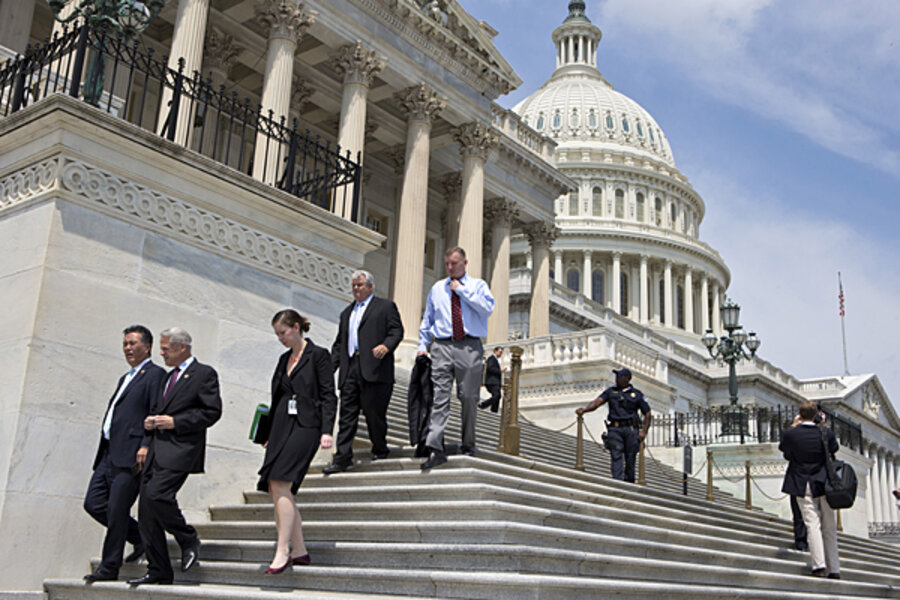Tax reform: It's expensive. Can Congress pay for it?
Loading...
Covering the revenue loss from deep individual income tax rate cuts while maintaining the income tax’s current progressivity is difficult, as Howard Gleckman explained here last week. It turns out that paying for corporate tax rate cuts is even harder. And new Tax Policy Center estimates show that lowering corporate tax rates without paying for lost revenue would be highly regressive.
Calls for reducing the top corporate tax rate from the current 35 percent have come from a wide array of sources, ranging from the president to members of Congress on both sides of the aisle to the business community and many economists. Our top rate is higher than that of any other developed country. That discourages investment in the U.S., and encourages income-shifting to avoid tax. Cutting our corporate tax rate makes economic sense.
But, as is the case with the individual income tax, proposals to reduce corporate taxes haven’t included specific provisions to replace the lost revenue.
That cost isn’t small: The Joint Committee on Taxation recently estimated that cutting the rate to 25 percent—and eliminating the corporate alternative minimum tax—would reduce revenue by $1.3 trillion over the next decade. Proponents of rate cuts generally imply that they would cover the lost revenue by paring back or eliminating corporate tax expenditures. The problem with that is there aren’t enough of the latter.
On paper, the sum of Treasury estimates of corporate tax expenditures appears to be big enough that eliminating them could pay for the rate cut. But a closer look suggests otherwise.
The two biggest tax expenditures are the deferral of foreign-source income of U.S. controlled foreign corporations and accelerated depreciation for machinery and equipment. But eliminating deferral would raise much less after the rate cut than the tax expenditure estimate, simply because deferral saves much less tax with lower rates. And in any case, Congress is unlikely to cut back on deferral: this year’s House budget resolution went the other way, proposing a territorial tax that would exempt most foreign-source income.
Eliminating accelerated depreciation is also unlikely. Recent administration budgets have proposed making depreciation more generous, not less. And eliminating accelerated depreciation to pay for rate cuts for all corporations would raise the effective tax rate on new investments in U.S. manufacturing.
Take those big preferences off the table and the revenue potential of base-broadening shrinks dramatically.
If we don’t pay for a corporate rate cut by broadening the tax base, whom would the cut benefit (beyond any potential boost to the economy)? Even though corporations write the checks, the tax is ultimately borne by people—investors, workers, or consumers. While economists disagree about how the burdens are distributed, our best reading of the evidence is that 20 percent of the tax falls on workers and the rest hits owners of capital. Most of the tax falls on high-income households because they own most of the nation’s capital.
As a result, reducing the corporate tax rate by itself would be highly regressive, as TPC’s new tables show. More than two-thirds of the tax savings would go to the top 20 percent of households and slightly more than half of that to the top 1 percent—households making more than about $2.1 million in 2015. Their taxes would drop an average of more than $35,000 that year, boosting their after-tax income by 2.6 percent. In contrast, people in the middle 20 percent—making an average of about $66,000—would pay an average of $300 less in corporate income tax, ticking their after-tax income up just 0.5 percent.
If it were possible and politically feasible, paying for the rate cut by paring back corporate tax expenditures would undo some or all of that regressivity. Just as lowering corporate taxes disproportionately benefits high-income taxpayers, raising the tax disproportionately harms them.
Whether Congress can find enough tax increases to offset the revenue lost from cutting corporate tax rates will determine the answers to two important questions: whether corporate tax reform will be revenue neutral and whether changes will affect the progressivity of the tax.







